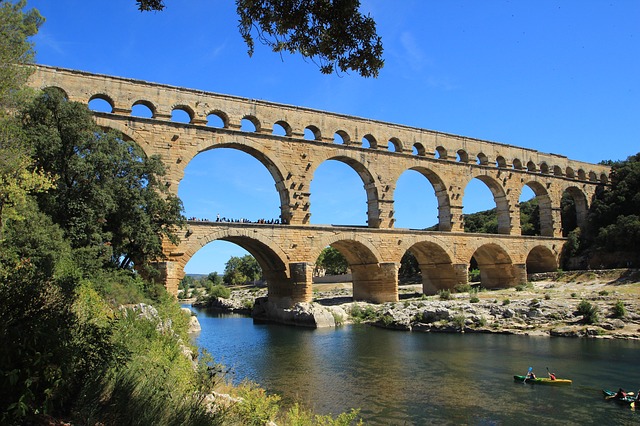
Nous Sommes Citoyens de France – We Are Citizens of France! The Fab Four are now officially Le Quatre Fabuleux. Following our trip to the vet, they got their DHPP vaccinations, French passports and a pipette for leishmania, a mosquito-borne disease to be wary of near the Med. On American Independence Day, they gained the freedom to travel throughout Schengen, which is more than we will be able to do at the end of the Brexit transition period. (For more information on why we put The Fab Four on French passports, see this IMPORTANT POST BREXIT PET TRAVEL UPDATE.)
As a treat, we took Le Quatre Fabuleux to river for a stick chase and then drove around to find a back way into the Pont du Gard.
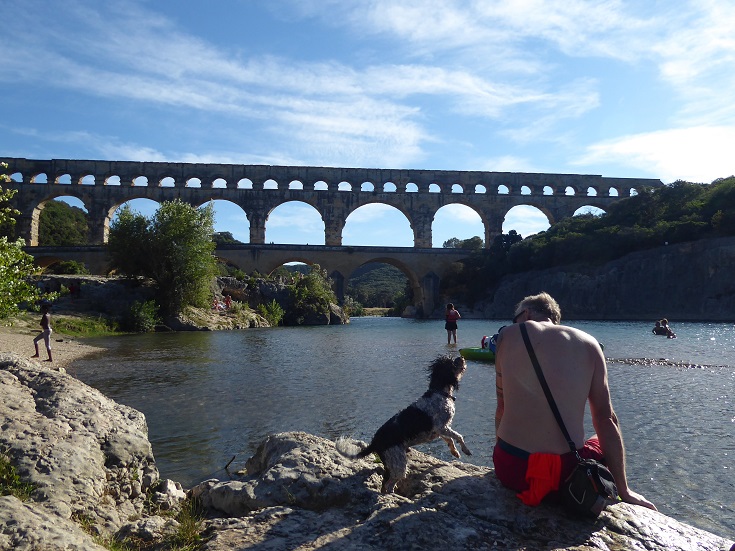
The largest and best-preserved Roman aqueduct has a €9 entry fee. For two of us, that is the same price as a campsite for a night; which matters when you’re on a budget and doing stuff every day.
“I’ve seen a picture of it on the internet!” I crowed, so we almost didn’t bother to go to see it, which would have been a huge mistake.
However, since the bridge has the decency to be crossing the river Gardon, we found a place to launch the SUPs (Stand Up Paddleboards) and formulated a plan to obtain free entry by paddling there. Further investigations showed that it was also on the GR63 long-distance walking route and a voie verte cycle way; we assumed correctly that there would be no admission charge from a national route.
After parking on the roadside close by, beneath an avenue of plane trees, we joined the GR63. The first ‘Wow’ moment came almost immediately, when we turned on to the path and were greeted by part of the aqueduct. The Pont du Gard is the famous sibling, but it’s easy to forget that it’s only a small part of the whole. In its heyday, the aqueduct was 50 km (31 miles) long. It was built to carry water from Fontaine d’Eure, near Uzès, to the Roman town of Nemausus – Nîmes, and there is still a great deal of it remaining.
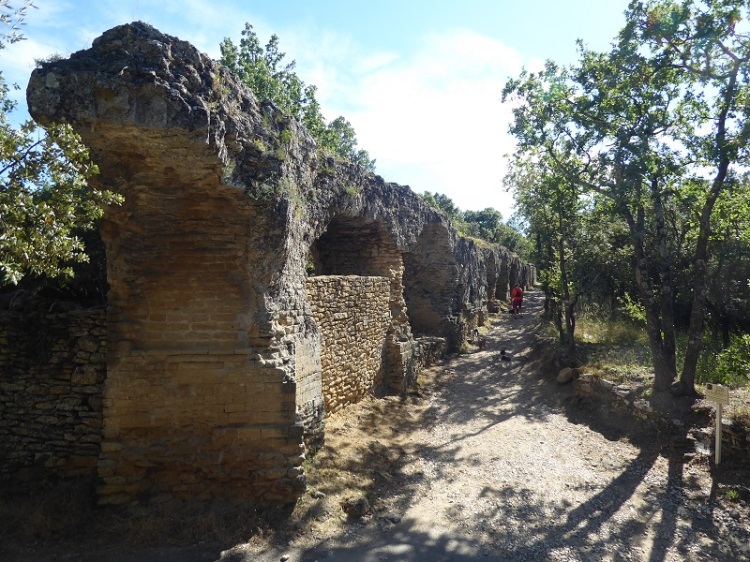
The beautiful, shady walk through scrubby trees and olive groves would have been worth doing anyway, but following a length of a 2,000-year-old aqueduct added a huge frisson of excitement for me. It was like walking through history. When we emerged from the woods and were greeted by the imposing majesty of the Pont du Gard, it was a truly a jaw-dropping moment.
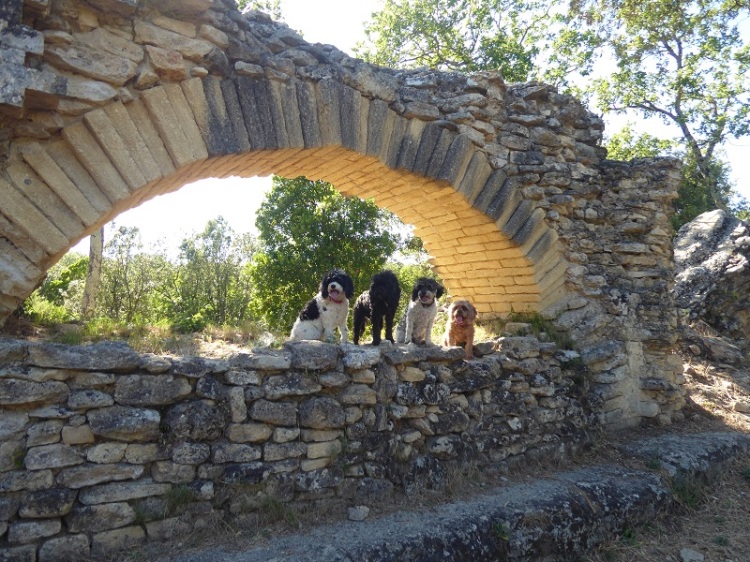
The setting is utterly picturesque, with the sparkling waters of the river winding through verdant vegetation on the banks. However, the scene is dominated by three tiers of arches, made from golden stone. They rise to a height of 48.8m (160ft), with a span of 273m (895ft). Originally, the bridge was 360m (1,181ft) wide, but the extra twelve arches on the top tier were looted for stone in in the middle ages.
The state of preservation is extraordinary and if you really stop to think about it, Pont du Gard is a marvel.
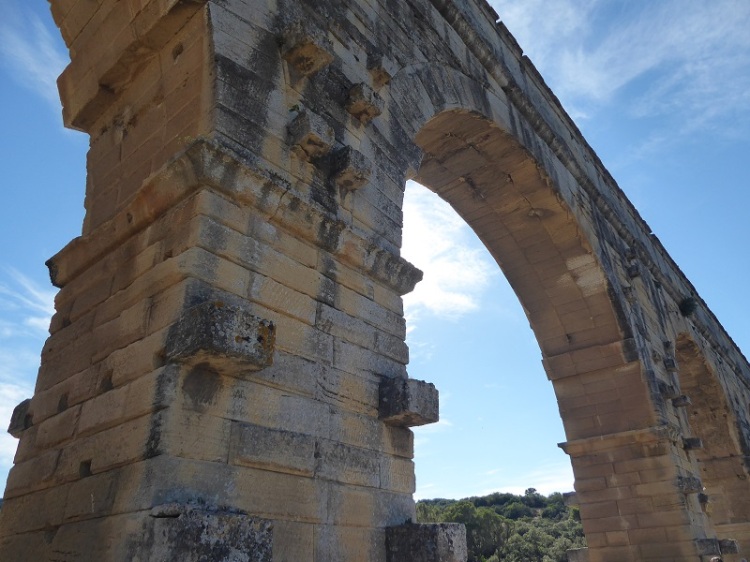
First, a Roman engineer had to scout the terrain to find the best route and crossing point. This would be on foot or horseback; there were no helicopters, drones or Google Maps in those days. Then, vast quantities of materials had to be quarried, prepared and transported to site, where the immense structures were built by hand. To put it into context, just the bridge contains nearly 55,000 tonnes of limestone. The biggest blocks are 2m3 and weigh as much as 6-tonnes each. The protruding stones still visible within the structure supported the wooden scaffolding during construction.
As the crow flies, the distance between Uzès and Nîmes is only around 20km (12miles), but avoiding the hills known as the Garrigues de Nîmes required a less direct route. The river Gardon and the foothills of the Massif Central were not the only obstacles to be overcome; besides the Pont du Gard, the aqueduct passes through hundreds of metres of tunnels and crosses around twenty bridges.
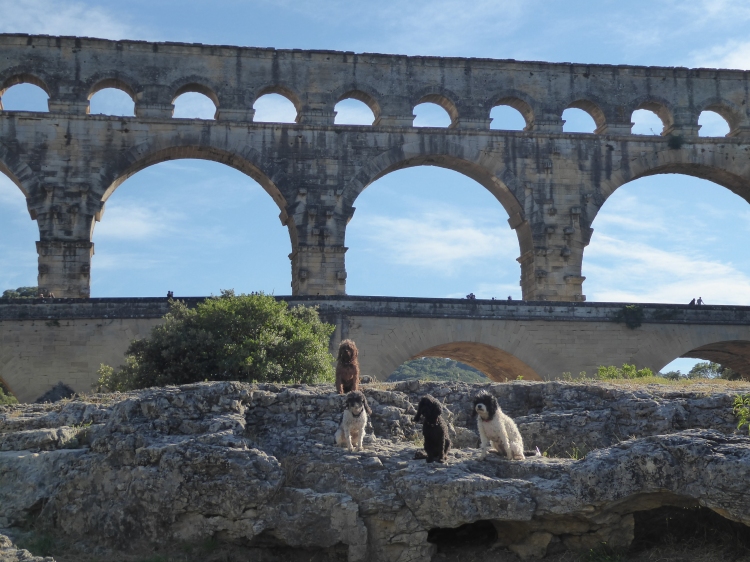
In an era before oil, steam and electricity, the best answer to getting 40,000 cubic metres (8,800,000 gallons) of water per day to flow consistently to your fountains and bath houses was gravity. Over its 50km (30 mile) length, the aqueduct descends just 12m (40ft), but the drop is not constant along the route. The Pont du Gard was right on the limits of Roman construction technology, but by varying the gradient, clever Roman engineers were able to reduce the required height of Pont du Gard by 6m (20ft). The accuracy of their measurements is staggering. The bridge itself descends a barely perceptible 2.5cm (1 inch)!
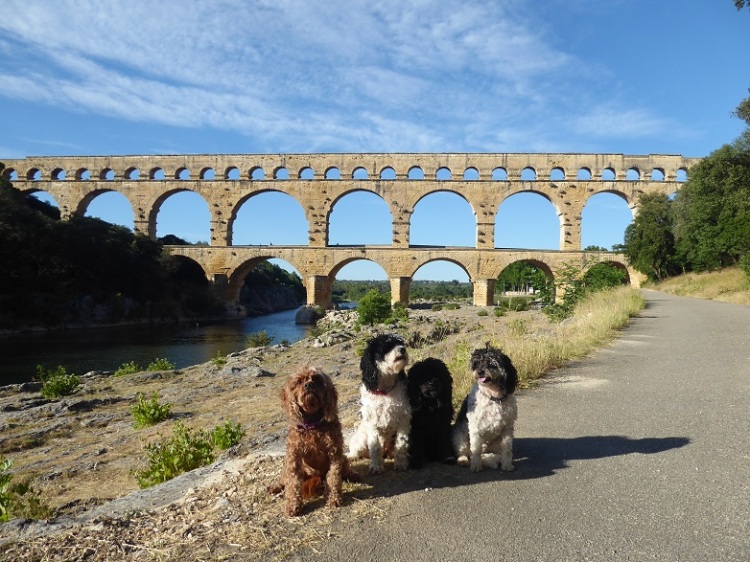
If you’re not yet impressed by Roman engineering, the huge structure was built without using mortar. The stone blocks were cut so precisely that they have stayed in place for two millennia through nothing more than gravity and friction. They have also survived the Gardonnaddes, the river Gardon’s infamous, raging floods. In recent times, the entire lower tier has been submerged. The pressure of the water against the structure must have been colossal, but although other, modern bridges were swept away in the floods, thankfully, The Pont du Gard survived.
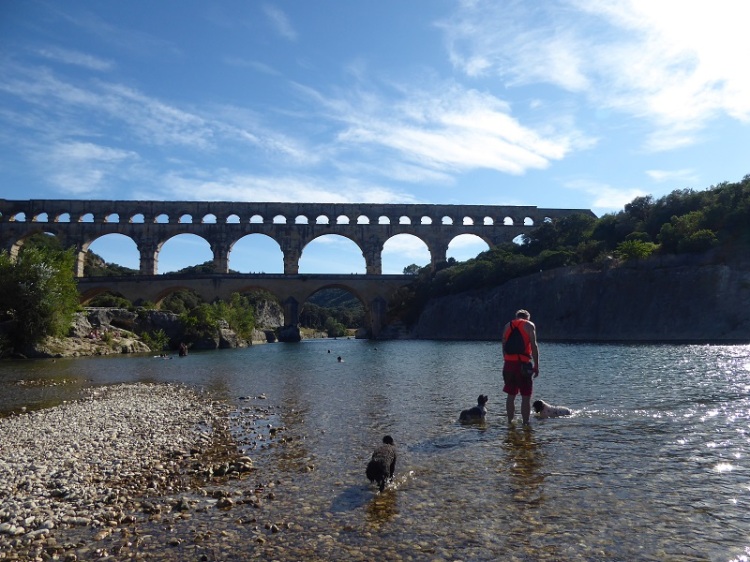
The riverside area was lovely, with pebble beaches and warm shallow water. The dogs had a ball. I liked the idea of returning the following day, it was such a wonderful spectacle, but I would bring a picnic and my swimming cozzie. Mark and I both agreed that we would willingly pay the entrance fee! It was absolutely worth it and we would not resent any funds that went towards preserving this absolutely wonderful piece of heritage. I have never been to Rome, but Mark assured me,
“This is even better than the Colosseum!”
It is hard to put into words, but the quote from philosopher Jean-Jacques Rousseau’s autobiographical Confessions describes the awe provoked by the “stone giant” perfectly,
“I expected to see a monument worthy of the hands which had constructed it. This time, the object surpassed my expectation, for the only time in my life… I walked the three floors of this superb building that respect almost prevented me from daring to tread under my feet. The sound of my steps under these immense arches made me believe I heard the voice of those who had built them. I lost myself like an insect in this immensity. I felt, while making myself small, an indefinable something that raised up my soul and I said to myself: ‘Why am I not Roman?’”
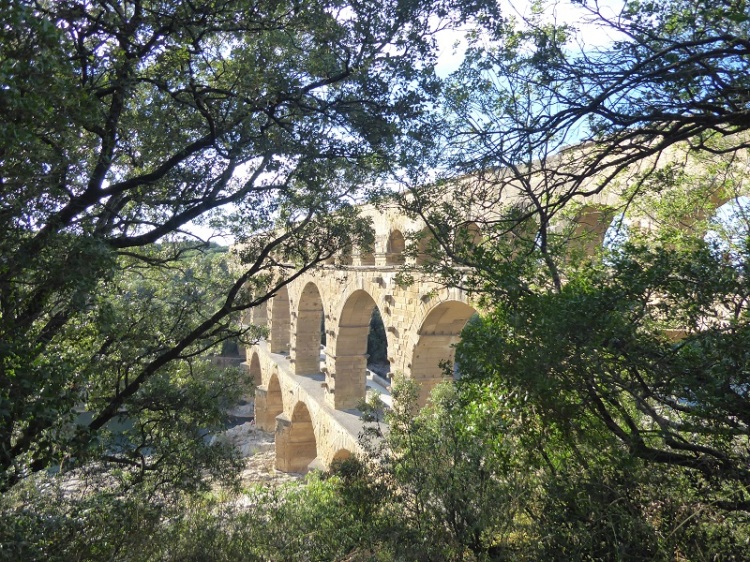
The Pont du Gard is so impressive that it became a must-see and inspiration for journeyman stone-masons, many of whom carved their emblems into the rock. It is also became a blueprint for other bridges; the famous Pont d’Avignon, built in the 14th Century, is one of many that was inspired by Pont du Gard, although with less success.
On our way back, Mark and I took a wrong turn, but were really glad that we did. We ascended some steps, which took us right to the top tier of the aqueduct. It was thrilling to look into the channel where the water would have flowed. In the past, it was possible to take a rather airy and dangerous walk across, but ‘elf and Safety has probably quite rightly put an end to that.
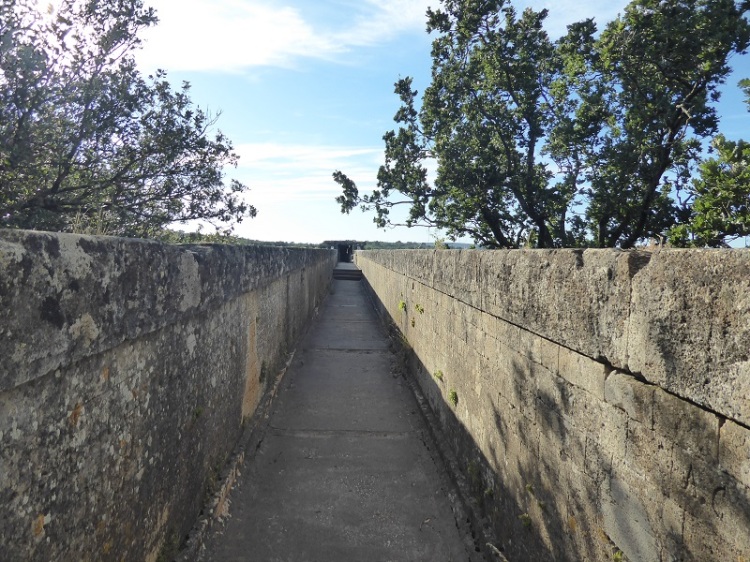
We returned the way we had come, crossing the river on the adjacent road bridge, which was built on the downstream side in 1743. Although it is possible that the aqueduct was still in use until the 6th Century, poor maintenance meant that the water channel eventually became blocked by debris and furred up with mineral deposits from the hard water. The Pont du Gard itself was preserved because of its secondary usefulness as a toll crossing of the river Gardon – and perhaps the fact that it is difficult to loot dressed stone from 50 metres in the air!
Besides the bridge, another highlight was watching our fellow tourists enjoying the pups, especially when we lined them up for photos. One chap asked me,
“Agilité?”
I told him that we don’t do agility with the dogs, but on the way home I decided that there should be a re-write of the French national motto for pooches;
Liberté, Agilité, Fraternité – Liberty, Agility, Fraternity!
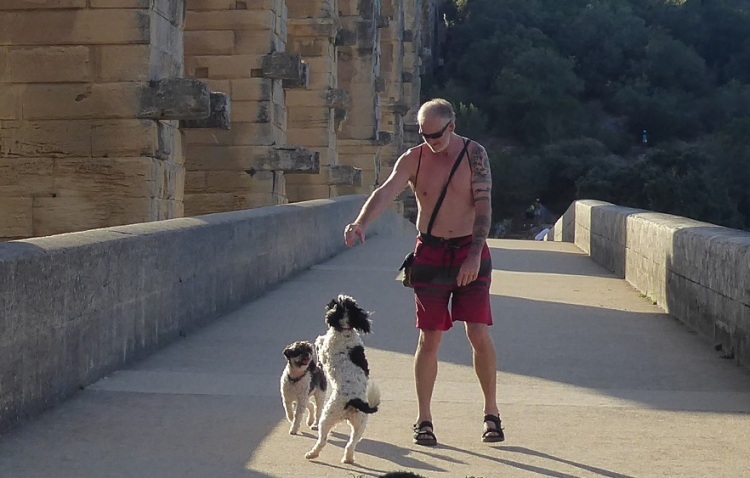
Join us next time for the truth about the Pont d’Avignon, and why it is a Bridge Not Far Enough.
Bring the Outside Into Your Inbox!
If you would like to receive weekly updates from our travels by email, click ‘follow’ or enter your email in the box to the top right of the page. No spam guaranteed and you can unsubscribe at any time.
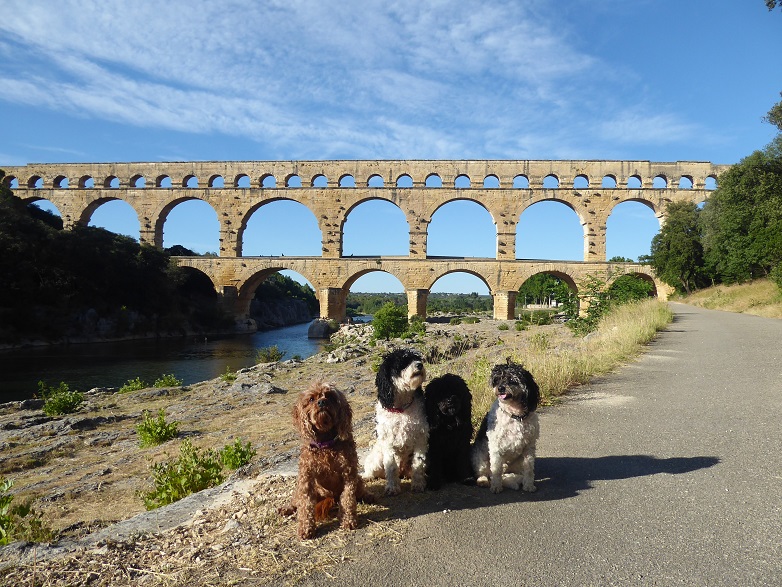
Reblogged this on The Bridgehunter's Chronicles.
LikeLike
Thank you so much! 🙂
Very much appreciated.
LikeLiked by 1 person
In my opinion well worth the entrance fee….however, many years ago it was all free and less commercial. In those carefree days, the kids would climb the bridge and leap off into the river below. I’m not sure if there were ever any accidents, but it can’t have been great to have hoardes of people clambering all over it!
LikeLiked by 1 person
Definitely worth the entrance fee! In retrospect, I would have paid it several times over to see this wonderful sight.
I am not sure it’s a great idea to climb it for safety or preservation reasons, but you have to think that if it’s survived for 2000 years, it must be pretty robust!
LikeLiked by 1 person